Hearing about columns might seem like a bore. What could there be besides the structural function of this circular architectural element? Only its artistic uses come to mind, particularly the classical orders defined by Vitruvius1. It is more difficult to imagine, however, the depth of symbolic meanings attached to the concept of columns. They acquired complex facets throughout the Middle Ages, becoming interpreters and generators of cultural worlds. We might be surprised, for example, to observe knotted columns on the pulpit of a church or in the cloister of an abbey. These are out-of-the-ordinary compositional patterns, quite unexpected for us today. However, Medieval Christian people well knew their meaning and symbolic knowledge.

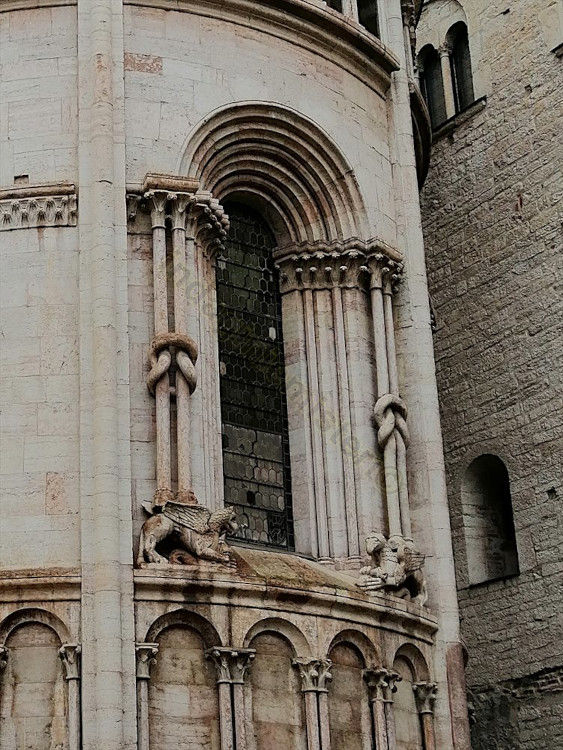
Knotted and Solomonic columns
In the Romanesque period, the use of knotted columns – also known as serpent columns – was widespread. Nonetheless, the origins of this architectural element are to be found in earlier eras. It is necessary to ask about the cultural substratum that generated the idea of knotted carving. Especially, what its symbolic and representative meaning was at the time.
Knotted columns were not a mere decorative artifact. The study of the findings revealed a specificity of use, well related to an apotropaic function. They are present in cult buildings, in particular, along a sacred limen, such as an entrance portal, a perimeter mullion, an iconostasis or the contemplative space of the cloister. A first observation is that the knotted columns most likely had the symbolic function of protecting the space dedicated to worship, of warding off evil spirits.
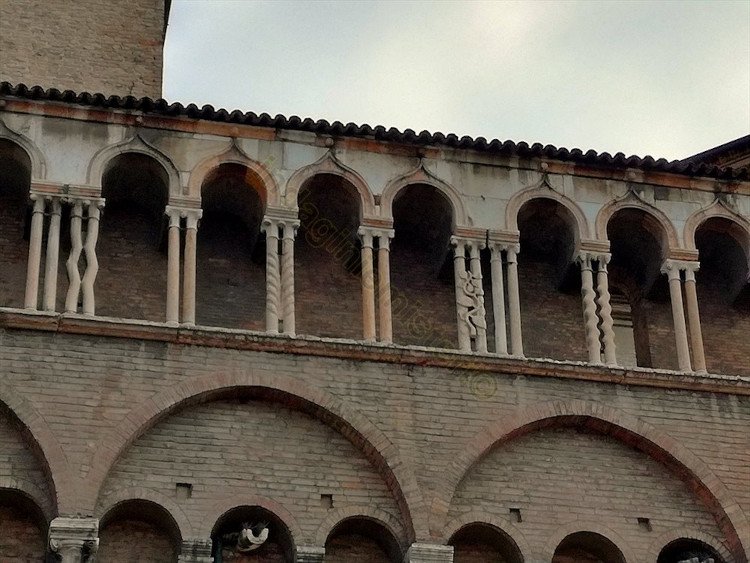
Indeed, Christian tradition recognizes the archetype of the columns in the mythical Jachin and Boaz of Solomon’s Temple in Jerusalem, which delimited the vestibule of the sacred building par excellence2. Different stylistic models from antiquity referred to them, especially the spiral columns located in the presbytery in the old Constantinian Basilica in Rome, where the tomb of Saint Peter was located. The tradition of these Solomonic columns developed from the Middle Ages to the Baroque era.
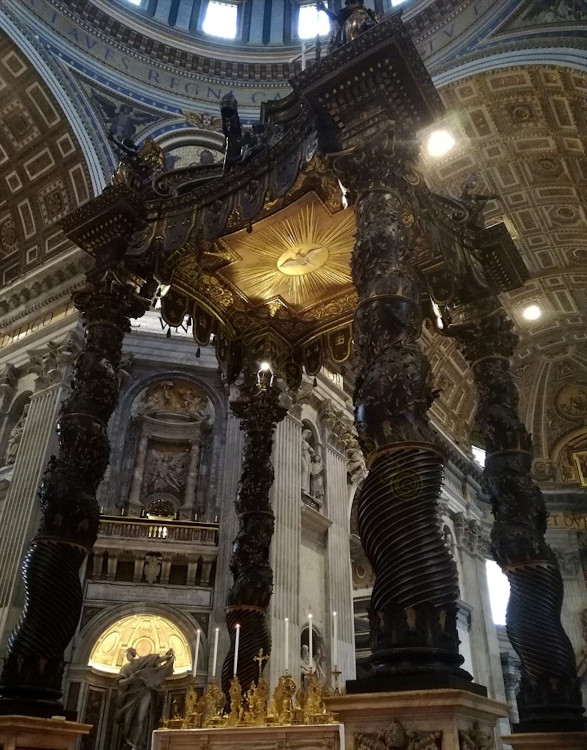
The Christological meaning of the knotted columns
We know from biblical sources that Christ is himself a temple, taking the concept of the sacred upon himself, since:
Jesus answered and said to them, “Destroy this temple and in three days I will raise it up.” The Jews said, “This temple has been under construction for forty-six years, and you will raise it up in three days?” But he was speaking about the temple of his body.
John 2: 19-21
And again, he is the one who defeats the devil, that is, he fully embodies that apotropaic function evoked at the sacred limen. The knotted column is thus an image of Christ. He is the true knot, uniting earth and heaven through his dual nature, human and divine.
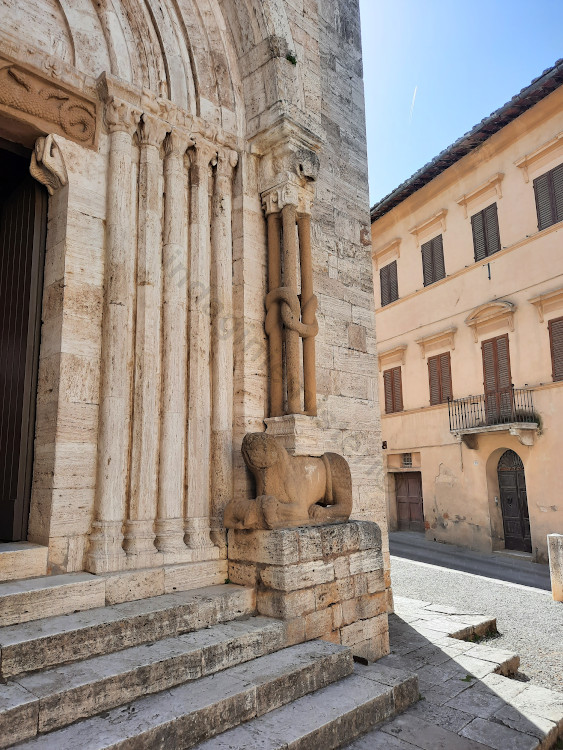
Hercules knot
One wonders why the use of a knot and not some other figurative element. After all, the Medieval bestiary abounded with Christological symbols. It is clear that the cultural substrate of the time already included the knot and that its meaning was shared in 11th- and 12th-century society. Numerous studies on it have attributed its spread to the Comacine and Cistercian masters. However, illustrations of knotted columns were known since Byzantine times3. In addition, the particular type of knot used by Romanesque masters was well known since antiquity. Roman depictions show the hero Hercules who ties the skin of the Nemean lion on his chest.
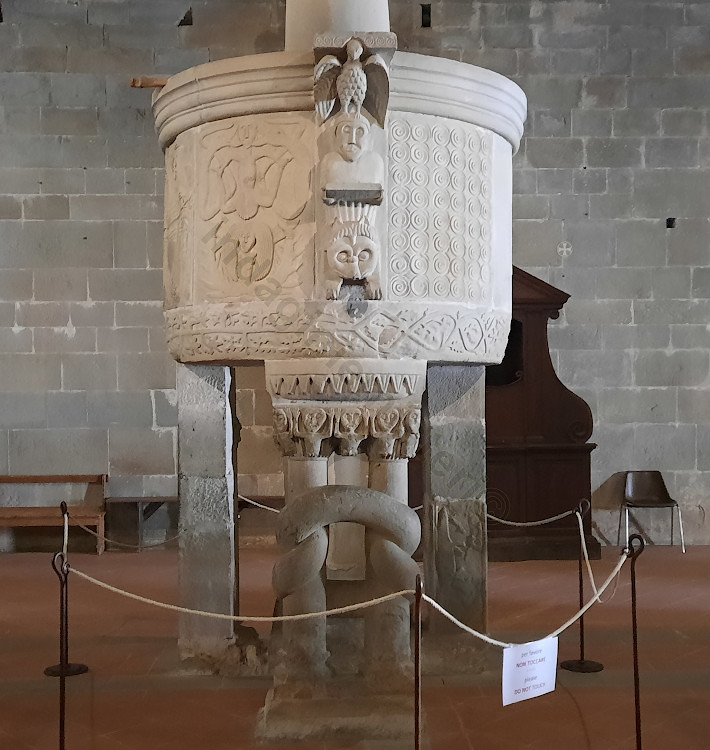
The weave represented, called Herculean, is exactly that employed in all knotted columns. As a Hercules knot, it already had an apotropaic function, and a representation of it was present in homes and in battle to ward off danger and evil forces. It seems clear at this point that this belief had continuity throughout the centuries and that it was revised in concomitance with the advent of Christianity, while keeping the original apotropaic meaning intact.
Samuele Corrente Naso

